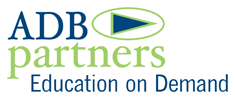Curriculum creates ties that bind: learner to learning, P2P engagement, and members to organizations.  In association professional development, curriculum really is the heart of the matter, as expressed by my friend and former executive director of the Texas Association of School Business Officials, Gwendolyn Santiago. She viewed curriculum as the heart of professional education. True indeed and a powerful vision coming from a top-level executive! And by the way, TASBO continues to grow its long-standing, aligned, active curriculum
In association professional development, curriculum really is the heart of the matter, as expressed by my friend and former executive director of the Texas Association of School Business Officials, Gwendolyn Santiago. She viewed curriculum as the heart of professional education. True indeed and a powerful vision coming from a top-level executive! And by the way, TASBO continues to grow its long-standing, aligned, active curriculum
Yet many associations offer robust career training programs, both in-person and online, without a solid curriculum foundation. Such a state can seem like an overwhelming dilemma, mainly how do you “stop” and develop curriculum. The answer is that you don’t stop. You build from the vibrant core of professional education and design the framework around that core to create a strong sustainable curriculum.
Curriculum can seem amorphous — like trying to grab a cloud. However, there are structural elements that are defined and offer starting points for building that sustainable foundation and framework.
First, define curriculum. Make this a clear, actionable definition that works across your organization. Identify the major components of a strong curriculum. Analyze the status of your association’s curriculum and its components. I have designed a basic review tool that can easily be used to launch the curriculum analysis.
Next recognize that there are different types of curriculum. UNESCO provides succinct definitions of four types of curriculum that are found around the world: written/intended; implemented; achieved or learned; and hidden. Whether developing, revising or just considering curriculum design, all of these types should be part of the calculus.
How does curriculum connect to curated content? Curation is the hot approach to content. When there is a connection between curriculum and curation, education assets can be leveraged for more effective, career-focused talent development. The written curriculum becomes the north star to guide selection of content. It also is a magnet for curation, in that the articulated curriculum attracts the curator to aligned content. Finally, the intended curriculum provides a solid foundation for curation of existing and design of new content.
Association curriculum can transform eLearning. Whether online or mobile, when eLearning is designed based on the intended curriculum, value is created for the learner and the association. For the learner, there is greater confidence that the time, energy, and resources devoted to eLearning can enhance career preparation and development. For the association, eLearning based on an articulated curriculum strengthens the organization brand as the “go-to” source for professional education.
Join Lance Simon of iCohere and me on August 9 at 3:30 ET to expand your curriculum horizons and take your organization’s eLearning to even greater heights. See you in ULD Studio!
